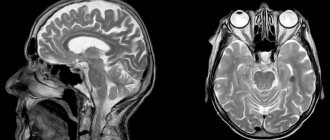Medical information is reliable Checked by Shaidullin Renat Flyurovich
Treatment of pyromania in Moscow is carried out successfully at the clinic of Dr. Isaev. This disorder requires an individual approach and the participation of experienced specialists in therapy. Our institution has every opportunity to effectively combat such deviations using branded drugs and modern psychotherapy techniques.
Pyromania is a disorder of desire, in which the patient has an irresistible urge to commit arson and watch fires. Such a desire is spontaneous, and the arson itself is carried out impulsively. The pyromaniac feels a pleasant delight at the moment of contemplating the combustion. Treatment of the disease is carried out comprehensively using psychotherapeutic methods, hypnosis and correction of behavioral disorders with the help of medications.
How a person is cremated in a crematorium these days.
Human cremation takes place in crematoria - complex engineering structures designed for 100% combustion of the dead along with the coffin at ultra-high temperatures.
The crematorium complex consists of several industrial furnaces capable of generating temperatures of 900-1100°C, which ensures the complete disintegration of the body and its transformation into ashes. Cremation takes from one and a half to two hours, and after cremation of a person, ashes with a volume of 2-2.5 liters remain.
The coffin with the body is delivered to the crematorium and placed on a hearse in the hall for the farewell ceremony. At the end of the ritual, the coffin is transferred to a conveyor and moved to a transit room, from where after a certain time it enters the cremation oven. Imagining how people are cremated in a crematorium, we, especially at a young age, think that the body goes into the fire immediately after the coffin disappears behind the curtains of the farewell hall. But this is not always the case: such technology is not provided in every crematorium.
After cremation, the ashes are placed in a metal capsule and sealed. Most often, the relatives of the deceased want to receive the ashes in an urn. Funeral urns come in a variety of designs and are chosen according to taste: purchased from a crematorium or funeral store and then given to the crematorium staff, who transfer the ashes from the capsule to the urn.
The urn is collected by the relative responsible for receiving it, after which the final stage of burial begins.
After cremation, the urn with ashes is stored in the crematorium until claimed by her relatives. The shelf life varies in different regions, but most often it is 1 year. If the ashes are not claimed, the urn will be buried in a common grave at the crematorium.
Origin of the word "erotica"
The noun “erotica” has its origins in ancient Greek. There is an adjective ἐρωτικός, meaning “loving”, “passionate”, “in love”. It was formed from the ancient Greek noun ἔρως - “love, passion.” The latter comes from the verb ἐράω, which is translated into Russian as “passionately desire”, “to love”.
This verb has a direct connection with the god of love Eros (Eros) present in Greek mythology. He is the constant companion and assistant of the goddess of love Aphrodite and personifies the love attraction that ensures the continuation of life on the planet.
In a number of European languages, the word was formed through the Latin eroticus. In Russian it appeared at the beginning of the 19th century, according to one version, from the French érotique, according to another, from the German Erotik.
In order to better understand that this is an erotomaniac, it would be advisable to consider the second component of this lexeme.
Pyromania causes
Pyromania in psychology is considered a disorder of impulsive behavior, which is characterized by a recurrent inability to resist the impulse to “burn something” and a strong preoccupation with contemplating the fire. The main feature of this disorder is the commission of arson without apparent reason or motivation, such as material wealth, revenge or ideology.
Freud also attached unconscious significance to fire. He saw in it a kind of intimate symbol. Freud believed that the heat spread by fire gives rise to the same sensations that accompany sexual arousal, and the movement and shape of fire resembles the phallus.
Other scientists associate pyromania with the manifestation of a pathological craving for power, social status and dominance. Often pyromaniacs can volunteer to serve as firefighters after setting something on fire. This behavior is associated with an attempt to prove that they are brave and courageous in order to demonstrate their strength. Pyromania is a way of releasing accumulated rage and frustration, which is caused by a feeling of sexual, physical or social humiliation.
Psychologists have noted that many pyromaniacs grew up in single-parent families (without a father). Therefore, one of the reasons for arson is the desire for the absent father to return home as a savior, putting out the fire and saving his child from the hardships of life.
There are significantly fewer female arsonists than male ones. Such women are characterized by sexual promiscuity and often suffer from kleptomania.
Today, experts in the field of psychiatry have put forward the theory that the basis of the irresistible craving for pyromania is mainly a disturbed or incorrect personality formation. There is also an opinion that the cause of this mania may be a severe form of one of the types of anomalies of sexual behavior.
Often the first manifestations of pyromania are observed in childhood or adolescence. If a child is over three years old, then matches have exceptional magnetism for him. Children's pyromania manifests itself by lighting fires or watching a burning candle. However, at the same time, children who commit arson do not understand all the consequences that their offense may entail.
Older pyromaniacs in such situations are the complete opposite, since they are well aware of all the consequences of setting a building or car on fire.
There is an opinion that the reason for the uncontrollable craving for arson in adults is the awakening of a primitive instinct with which they cannot cope. If an individual has mental illness, then in all cases he cannot overcome the urge to commit arson.
It has been established that in eleven percent of cases pyromaniacs are people with mental disorders, and every fourth of them has a tendency to relapse and serial arson. In judicial practice, there is a known case where a subject who underwent a psychiatric examination committed arson more than 600 times. Psychiatrists believe that pyromaniacs can be found both among those who enjoy contemplating the flames and among those who are on the other side of the barricades - working in the fire service.
Risk factors
In addition to humiliation and lack of upbringing, risk factors for the development of pyromania are considered to be living in a single-parent family. Currently, many children are being brought up without a father, who once left his family, and the child’s desire is to return his father in any way: attracting attention to himself, creating situations that threaten the child’s life, which can include arson. The child or teenager does not fully understand the danger of such behavior, nor does he think about the fact that the father may not even know about the danger threatening his child.
Signs of pyromania
According to many psychologists, this type of mania should be considered a serious mental disorder. A true pyromaniac is unconsciously and irresistibly drawn to committing arson, and he does not need any reasons or motives to commit them. They experience true pleasure from the very process of committing arson. They also rarely hide their involvement in a fire.
Psychiatrists believe that cases of true pyromania are quite rare. Basically, manifestations of an irresistible craving for arson and contemplation of flames accompany other, more serious diseases, for example, schizophrenia.
The main signs of pyromania:
— multiple arson attacks or attempts to commit them without obvious motives (at least two unmotivated arson attacks);
— the arsonist’s actions are characterized by confidence and intensity;
- before committing arson, pyromaniacs have internal tension, excitement, which passes immediately after the accomplishment of the plan and a feeling of relief appears;
- reflections on objects related to fire;
- the pleasure of watching the flame;
- in some cases, an abnormal interest in machines and equipment intended for extinguishing fires is detected;
- pyromaniacs, when committing arson, never pursue material goals;
- pyromaniacs often act as spectators - they like to watch fires, for example, in their neighbors;
— often people suffering from this disease report false arson;
- in some cases, pyromaniacs feel sexual activation at the sight of a flame;
- the subject is constantly haunted by thoughts about choosing a suitable object for arson, about how to start a fire.
If the symptoms of this disease are identified earlier, it is easier to cure it. Pyromania can be accompanied by alcoholism. In such cases, the desire to set fire becomes even more uncontrollable and uncontrollable. Such people do not realize the consequences of their actions and do not take responsibility for their actions. Today there is a lot of controversy about what this type of mania is.
Pyromania in psychology and psychiatry is still considered a disease related to severe mental disorders. In addition, this disease is characterized by a chronic course.
At the same time, pyromania should be distinguished from:
- deliberate arson (when there is a clear motive) in the absence of mental disorder;
- arson committed by teenagers with deviant behavior, in cases where there are other behavioral disorders, for example, aggression, theft, truancy;
- arson committed by persons with sociopathic personality disorders with persistent violations of social behavior, for example, aggression or indifference to the interests of other people;
- arson committed by people diagnosed with schizophrenia. Such arson is usually carried out by them under the influence of delusional ideas or as a result of obeying the orders of “voices”;
- arson committed by people with organic mental disorders.
Symptoms
When committing arson, a person most often does not pursue any personal motives, it follows that the pyromaniac does not prove anything by his action. In most cases, the pyromaniac does not try to hide any crime, is not aimed at obtaining material gain, and his actions are not a manifestation of political or social discontent.
The main goal pursued by the patient is to obtain maximum pleasure from observing the combustion process. Persons suffering from a pathological addiction to arson may not hide their involvement in fires, and also commit arson systematically.
The distinctive signs of pyromania are:
- Repeated attempts to commit arson for no apparent reason.
- Confidence and intensity of actions.
- Constant thoughts about fire and things related to it.
- Ability to report false arson.
- Tendency to observe fire from outsiders.
- The appearance of internal tension before committing arson and rapid relief after the deed.
- Getting pleasure from contemplating fire.
- Lack of material motives for one’s actions.
- Interest in objects and vehicles related to firefighting.
- The appearance of sexual desire when contemplating fire in some cases.
- Detailed consideration of how to commit arson and where best to do it.
What it is?
Pyromania got its name from the ancient Greek words πῦρ, which means “flame” and μανία – “madness”, “passion”. This is the name of a mental disorder, which belongs to the category of behavioral and desire disorders. Pyromania is a disease that manifests itself as an incredibly strong desire to commit arson and enthusiastically watch the fire blaze.
The term was first introduced into psychiatric practice in the 19th century, but the phenomenon itself was known long before that. Modern experts consider pyromania not only as a mental illness, but also from a legal point of view, as a direct violation of the law, a crime.
A true pyromaniac never sets anything on fire for profit or profit, as a protest or in order to hide traces of crimes. Setting it on fire is the only way to get rid of an obsessive thought and realize it. Watching a neighbor’s house, a work of art, money or worthless garbage burn, a pyromaniac experiences the same joy, euphoria, satisfaction, and he feels better.
Psychiatrists know of cases where pyromaniacs experienced real sexual arousal at the moment of burning something, followed by release. This is called pyrolagnia.
A pyromaniac never plans in advance what to burn - an irresistible urge to commit arson arises suddenly, spontaneously, impulsively. Quite often, a pathological craving for flames develops in childhood, and the peak of the disease is considered to be between 16 and 30 years of age inclusive.
Women suffer from pyromania much less often than men. The overall prevalence of mental disorder is about 0.4% of the population. That is how many pyromaniacs walk among us.
History has known many pyromaniacs. The most famous can safely be considered Herostratus - an ordinary resident of Ancient Greece, who became famous for nothing else except his strange attitude towards arson. The man simply burned down the Temple of Artemis in Ephesus.
He could not really explain his action. Historians suggest that Herostratus simply wanted to get his “moment of glory.” And received. Along with the death penalty.
Pyromania was characteristic of Emperor Nero, who did not limit himself to one building and immediately burned down the entire city - Rome. It burned for a week, and all this time Nero watched the fire. Realizing what happened when almost everything burned down, the emperor found nothing better than to blame the incident on Christians, after which mass pogroms began.
The famous physicist Robert Wood was also known for his painful attitude towards fire. Since childhood, the boy loved to set things on fire and explode, and by the age of 8, Wood had terrified those around him, which is why he was regularly visited by the police. Then the young physicist advised police officers, helping them expertly identify the types of explosives and flammable substances that criminals used to commit explosions and arson.
The most unfortunate can be considered a pyromaniac from France. In 1776, police arrested 16-year-old Jean Baptiste Muron, who was obsessed with setting fires for no apparent purpose. For a series of fires, a young man was sentenced to 100 years in prison. It should be noted that Jean served his term “through and through”, being released at the age of 116 years.
Causes of mental disorder
Pyromania is a mental disorder that can develop in a person for a number of reasons:
- accumulation of negative emotions that require release;
- a feeling of powerlessness in the face of some life difficulty;
- experiencing constant humiliation from family members or peers in a team;
- low self-esteem;
- long-term loneliness.
Cancerophobia - what does it mean, symptoms
As a rule, people suffering from pyromania experience a feeling of inferiority and inadequacy in everyday life. Committing arson, a mentally ill person compensates for the lack of self-confidence through the flame: it seems to him that he controls the powerful energy of fire, admires the creation of his hands, admires the movement of tongues bursting with heat.
Attention! In the presence of a sexual mental disorder, men who have a passion for fire experience sexual satisfaction from the sight of playing flames, which is used by such patients as sublimation.
Scientists explain the predominance of men among pyromaniacs from a medical point of view by the presence of the male sex hormone, which pushes its owner to search for dangers and thrills that can increase the level of adrenaline in the blood.
Men predominate among pyromaniacs
Craving for arson in children
Most psychiatrists are of the opinion that pyromania occurs as a result of abnormal development of personality structure, and the formation of a mental disorder begins in childhood. If the first symptoms of the disease are detected in a teenager, its manifestations can be much more destructive.
Almost every child experiences some interest in fire, and at the first opportunity tries to play with matches. Children can make fires and set fire to certain objects, but normally a few times should be enough to completely lose interest in this activity. A pyromaniac child tries to associate all his games with fire, which should alert parents and others. Children's pyromania poses a particular danger, because the child is not fully aware of the threat that fire hides and the possible dire consequences of arson.
By the way, some psychologists express the opinion that in adulthood a person may well choose a profession related to fire (firefighter, fakir, etc.), if in childhood he developed a craving for this phenomenon.
Diagnosis and treatment
In order to confirm the diagnosis, the psychiatrist needs to find out whether the patient had motives for setting the fire. If there were, then we are talking about a crime. If he did it for the purpose of pleasure, there is a mental disorder.
A specialist can prove the presence of pyromania based on the following points:
- There were more than 2 arson attacks. The man carefully thought through and planned each of them.
- Immediately before and during the fire, the patient experienced a lot of positive emotions, ranging from joyful anticipation to indescribable delight.
- There was no goal to take revenge on anyone or prove anything, or to hide what had been done. The desire to set something on fire was impulsive.
If there is a suspicion of schizophrenia, alcoholism and drug addiction, dementia or other personality disorders, additional diagnostics will be required, in particular CT and MRI.
The treatment plan is determined by the complexity of the course of pyromania. If the pathology does not develop against the background of any mental illness, but as an independent disorder, hospitalization will be required. The main difficulty is that patients often do not realize their condition and try hard to avoid treatment. In some cases it has to be done forcibly.
Treatment consists of 2 stages. The first is drug therapy. Medicines will help cope with impulsive desires to set something on fire. The most commonly prescribed drugs are antipsychotics, anxiolytics, and sedatives.
The second stage is psychotherapy. But we are not talking about passive methods. Attempts to change the patient’s beliefs will not end in anything. Therefore, the use of hypnosis and neurolinguistic programming is recommended. Psychocorrection is possible already at the recovery stage.
The mechanism of development and symptoms of pyromania
The disorder does not form overnight. It goes through several stages of development:
- First, a person has an obsessive thought that he needs to start a fire and admire the fire. There is no way to get rid of this desire.
- Further, the patient admits that his idea can be realized. This improves his mood. Thus begins the thinking stage, which brings with it joyful anticipation.
- Next comes the actual implementation of the plan or arson. At this stage, a person experiences unprecedented euphoria and a feeling of happiness. The amount of adrenaline and serotonin in the blood increases.
- After the arson is committed, the stage of repentance begins. A person realizes that he has done something bad, and this makes him depressed. In order to get out of it, he needs a new portion of thrills. And so on in a circle.
Over time, the intervals between stages become shorter. During these intervals, pyromaniacs think about fire, fires. They watch films and news on this topic with unprecedented pleasure, and also discuss it with others. Moreover, they often see fires in their dreams.
If a person suffering from pyromania drinks alcohol, he becomes almost uncontrollable, which is why he is capable of impulsive actions. So, he can set fire to a house with people inside.
So, you can determine the presence of pyromania by the following signs:
- Arsons set by patients have no purpose or motive and do not require profit or damage.
- Everything happens spontaneously.
- Thinking about an event causes a person to experience great excitement and anxiety.
- Hyperactivity appears.
- When observing the fire, the patient feels delight, pleasure, and sometimes excitement.
An unhealthy craving for fire also manifests itself in conversations, obsessive thoughts, and drawings.
Pyromania: reasons
Like other forms of deviant behavior, the development of pyromania occurs as a result of the negative impact of external and internal factors. The main reasons for the formation of an abnormal passion for committing arson are the following factors:
- genetic predisposition to social deviations, a family history of mental disorders;
- insufficient level of intellectual development, acquired both from birth and as a result of organic brain diseases, cranial injuries;
- significant deviations in the emotional-volitional sphere;
- instability and imbalance in the mental sphere, which caused the formation of pathological arousal and affective states;
- instability in society, financial and political crises that lead to a gap between the goals of the human community and acceptable ways to achieve these goals;
- conflict between the individual’s personal worldview and the priority values of the majority;
- problematic period of growing up, lack of attention or excess of control over the child, antisocial behavior of parents;
- negative environmental impact;
- deviations in the subject’s self-esteem and personal aspirations, which creates a need to demonstrate one’s own strength to society;
- pathological thirst for power;
- serious problems of the individual in the intimate sphere, long-term sexual deprivation.
aftercare
In the subsequent treatment of an addictive disorder such as pyromania, the reintegration of victims into society is of great importance. Facilities that offer assisted living, including self-help groups and complementary therapy, are particularly helpful here. Survivors again face daily life as a group, beginning with professional help from specially trained addiction counselors and therapists.
After such a stay, it is advisable to provide additional therapeutic support to the victims. The success of such aftercare and the prevention of recidivism depends primarily on the motivation of the victim. In addition, the environment, integration into daily life and restoration of independence are important. Family involvement and supportive friends play a critical role in the recovery process.
If possible, the person concerned should also engage in normal activities, such as work or charity work. In every city there are special contact points for drug addicts that provide assistance in this matter. You can also increase your free time by finding a hobby and doing it. In addition, it is possible to establish new contacts and regular meetings for such a hobby, facilitating integration into everyday life.
Signs of pyromania
According to many psychologists, this type of mania should be considered a serious mental disorder. A true pyromaniac is unconsciously and irresistibly drawn to committing arson, and he does not need any reasons or motives to commit them. They experience true pleasure from the very process of committing arson. They also rarely hide their involvement in a fire.
Psychiatrists believe that cases of true pyromania are quite rare. Basically, manifestations of an irresistible craving for arson and contemplation of flames accompany other, more serious diseases, for example, schizophrenia.
The main signs of pyromania:
— multiple arson attacks or attempts to commit them without obvious motives (at least two unmotivated arson attacks);
— the arsonist’s actions are characterized by confidence and intensity;
- before committing arson, pyromaniacs have internal tension, excitement, which passes immediately after the accomplishment of the plan and a feeling of relief appears;
- reflections on objects related to fire;
- the pleasure of watching the flame;
- in some cases, an abnormal interest in machines and equipment intended for extinguishing fires is detected;
- pyromaniacs, when committing arson, never pursue material goals;
- pyromaniacs often act as spectators - they like to watch fires, for example, in their neighbors;
— often people suffering from this disease report false arson;
- in some cases, pyromaniacs feel sexual activation at the sight of a flame;
- the subject is constantly haunted by thoughts about choosing a suitable object for arson, about how to start a fire.
If the symptoms of this disease are identified earlier, it is easier to cure it. Pyromania can be accompanied by alcoholism. In such cases, the desire to set fire becomes even more uncontrollable and uncontrollable. Such people do not realize the consequences of their actions and do not take responsibility for their actions. Today there is a lot of controversy about what this type of mania is.
Pyromania in psychology and psychiatry is still considered a disease related to severe mental disorders. In addition, this disease is characterized by a chronic course.
At the same time, pyromania should be distinguished from:
- deliberate arson (when there is a clear motive) in the absence of mental disorder;
- arson committed by teenagers with deviant behavior, in cases where there are other behavioral disorders, for example, aggression, theft, truancy;
- arson committed by persons with sociopathic personality disorders with persistent violations of social behavior, for example, aggression or indifference to the interests of other people;
- arson committed by people diagnosed with schizophrenia. Such arson is usually carried out by them under the influence of delusional ideas or as a result of obeying the orders of “voices”;
- arson committed by people with organic mental disorders.
Pathogenesis
Complex behavior is formed in stages: first, an idea arises and its driving force is impulse; then thinking occurs - defining a goal, anticipating a result, drawing up a plan; then actions are implemented. If at the second stage it becomes clear that the action is inappropriate, unacceptable, or dangerous, then the impulse fades. Pyromania is a disorder of impulsive behavior - desires and aspirations appear spontaneously, are not controlled, and are realized without the stage of analysis and planning. Thinking about motives and consequences occurs after committing an act and receiving release. The physiological basis of behavioral disorders is often immaturity and insufficient functional activity of the frontal areas of the cerebral cortex, which are responsible for programming and controlling complex behavior and social emotions.
The actual content of pyromania is explained by several theories. According to the psychoanalytic concept of S. Freud, flame is a symbol of sexuality and is associated with the male penis. The motive of pyromaniacs is the desire to obtain sexual satisfaction. Biological theories view this disorder as a manifestation of the ancient instinct of worshiping fire as a source of warmth and life.
In social psychology, arson is considered a special form of social behavior that allows you to attract attention, take a dominant position, subordinating people forced to fight the fire to your will.
Treatment options
Since pyromania is a pathological syndrome that falls within the scope of a mental disorder, treatment should be aimed at eliminating the disease as a whole. All manic arsonists do not realize the severity of their condition, so treatment for pyromania is complex and painstaking work. Sometimes the only option for preventing arson is the involuntary placement of an individual in a psychiatric hospital.
In addition, a person with pyromania has a reduced ability to evaluate his actions or is completely absent. There is no motivation to contact a specialist to overcome pathological cravings. Therefore, an important stage in the treatment of pyromania is the person’s awareness of his destructive actions.
Real medicine helps eliminate signs of obsessive behavior, pyromania, if it occurs in the complex of obsessive-compulsive disorder. The doctor selects individual therapy after conducting a series of diagnostic measures. Treatment for pyromania includes psychotherapy, medications and hypnosis.
Hypnosis sessions are shown to be highly effective in treating this disorder. Manic behavior can be eliminated by influencing the subconscious, by transforming negative emotions into constructive positive feelings.
Treatment of pyromania in Moscow
Treatment of pyromania is carried out depending on its etiology. The true form of the disease often requires isolation of the patient and his hospitalization, since he does not have within himself an awareness of the abnormality of his need. This greatly complicates the provision of assistance; the lack of a person’s critical approach to his condition and non-recognition of his problem does not make it possible to create a trusting relationship with doctors. Therapy of the disease is carried out in a complex and includes the following stages:
- use of medications;
- passive psychotherapy;
- hypnosis;
- active psychotherapy and analysis.
A severe form of pyromania requires immediate hospitalization and constant supervision by specialists. At the same time, it is necessary to correct behavior, stop manic tendencies and treat obsessive states. For this purpose, anxiolytics, neuroleptics, and sedatives are used.
The initial motivation of a person with such a pathology is absent. Therefore, first of all, correction methods are applied to him that do not require active participation from him. Hypnosis or suggestion without inducing a trance works best. Such techniques at the subconscious level help to introduce the idea of irrationality of behavior and reprogram negative experiences into neutral or positive ones.
After achieving the first positive results of treatment, active cognitive behavioral psychotherapy and psychoanalysis are used. At this stage, a person becomes aware of his attraction as wrong, so he begins to actively participate in his treatment and learns to control his actions, find new life goals and priorities, and look for safe ways to rejoice and have pleasure.
Pyromania. Reference
Psychologists believe that pyromania is a disease, a mental disorder. The patient is irresistibly attracted to arson, and he does not need a motive for this. The process itself is important to a pyromaniac; he receives true satisfaction from what is happening and absolutely does not hide his involvement in it. According to psychologists, cases of pyromania are extremely rare and often accompany other serious mental illnesses - depressive psychosis and schizophrenia.
Patients who observe or participate in a fire show interest and curiosity, and experience joy, satisfaction, or relief. They never commit a fire for material gain, to conceal crimes, or as an expression of socio-political protest.
Currently, the prevailing version in medicine is that pyromania is an attraction, which in most cases is based on abnormal or impaired development of the personality structure. Many doctors consider pyromania to be a severe form of one of the types of sexual deviation.
Pyromania is thought to begin in childhood or adolescence. Children aged three years and older are attracted to matches like a magnet. They love to light fires and look at burning candles. However, a child who causes a fire is not able to assess the consequences of his actions - unlike adult arsonists who understand what will happen if they set fire to a house or car. The passion of adults for arson, psychologists believe, is the awakening of a primitive instinct that a sick or immature intellect cannot cope with.
According to professor of psychiatry Volker Faust (Germany), there are significantly more people suffering from an unmotivated passion for arson than was officially established during a psychiatric examination. Only 10% of all attackers are subject to examination, although during interrogations they cite such motives for their actions as the desire to admire the performance, demonstrate their strength, take revenge on their parents, enjoy cries for help, and the like. Of this 10%, on average, three quarters are men. 11% have mental disorders, and every fourth is prone to relapse and serial arson.
Berlin criminologist Claudius Oder gives the example of a pyromaniac who, after a psychiatric examination, committed arson more than 600 times.
According to German psychiatrists, pyromaniacs can often be found not only among those who like to admire the fire, but also among fire department workers, and it is they who are most actively involved in extinguishing the fires they themselves have started.
Psychologists give the following portrait of a pyromaniac: this is, as a rule, a man under 30 years of age who has had problems studying at school or obtaining a profession, he often suffers from physical disabilities and has difficulties communicating. Most of them are unmarried or just divorced.
The material was prepared based on information from open sources
All inquiries>>
Story
In the 1800s, pyromania was considered a concept associated with moral insanity and moral cure, but was not categorized as an impulse control disorder. Pyromania is one of the four recognized types of arson, along with burning for profit, to cover up a crime, and for revenge. Pyromania is the second most common type of arson. Common synonyms for pyromaniac in colloquial English include firebug (US) and fire raiser (UK), but they also refer to arsonists. Pyromania is a rare disorder, with an incidence rate of less than one percent in most studies; In addition, pyromaniacs account for a very small proportion of psychiatric hospitalizations ( ). Pyromania can occur in children as young as three years old, although such cases are rare. Only a small percentage of children and teenagers arrested for arson are child pyromaniacs. Men predominate; one source states that ninety percent of people diagnosed with pyromania are men. Based on a survey of 9,282 Americans using the Diagnostic and Statistical Manual of Mental Disorders
, 4th edition, impulse control problems such as gambling, pyromania, and compulsive buying collectively affect 9% of the population ( ). A 1979 study by the Law Enforcement Assistance Administration found that only 14% of fires were started by pyromaniacs and other people with mental illness (). The 1951 Lewis and Yarnell study, one of the largest epidemiological studies ever conducted, found that 39% of those who deliberately set fires were diagnosed with pyromania. harv error: no target: CITEREFThe_Arsonist's_Mind2006 (help) harv error: no target: CITEREFAlspach2005 (help) harv error: no target: CITEREFSmith1999 (help)
Diagnostics
When identifying pyromania, the main goal is to distinguish between pathological and intentional arson. In cases of mental disorder, episodes occur without a motivational basis - patients do not seek to gain benefit, take revenge, harm, protest, or hide traces of a crime. The only purpose of arson is to experience the pleasure of watching the combustion process
An important diagnostic task is also to differentiate the urge to set fires as a separate disorder from pyromania as a symptom of mental illness.
In schizophrenia, the organization of fires occurs as an inadequate reaction accompanying delusions or hallucinations. With organic lesions of the central nervous system, arson becomes the result of a violation of volitional regulation and the ability to assess the danger of an act. Patients with chronic alcoholism suffer from obsessions and start fires for fun. In adolescence, pyromania often develops as part of behavioral deviations; it has a dual goal - to experience pleasure and to oppose oneself to other people. Patients are examined by a psychiatrist using a clinical method. To confirm the diagnosis, the following criteria must be identified:
- Number of arson incidents.
The patient organized 2 or more arson attacks. The episodes are purposeful and thoughtful. - Positive experiences.
Before the fire, the patient experienced excitement, anticipation of delight. When observing fire - joy, pleasure, satisfaction. The conversation notes notes of admiration, fanaticism, and pleasure when describing the arson. - Lack of selfish motives.
The patient did not have the goal of taking revenge on anyone, hiding the consequences of the crime, or obtaining material gain. Behavior is based on an impulsive desire for pleasure. - No mental disorders.
To identify the true form of pyromania, it is necessary to exclude schizophrenia, alcoholic, drug and organic psychosis, dementia, mental retardation, and dissocial personality disorder. If these diseases are suspected, additional diagnostics are carried out.
Sources
- https://depressio.ru/drugie-bolezni/manii/707-piromaniya.html
- https://www.krasotaimedicina.ru/diseases/psychiatric/pyromania
Questions and answers
What happens if pyromania is not treated?
Without treatment, the disease progresses and becomes more and more severe. The number of cases of arson is becoming more frequent, and the interval between them is becoming smaller. At the same time, in order to experience satisfaction, the patient sets fire to larger objects, and this leads to the tragic death of many people. As pyromania progresses, a person’s behavior becomes less and less adequate, and they begin to pose a greater danger to society.
Is there any hope for a complete cure for pyromania?
If the disease is registered in the early stages and therapy is carried out, including medication and the work of a psychotherapist, then the prognosis is usually favorable. The patient's behavior is corrected, and actions become productive. But this is provided that the true form of pathology occurs. When pyromania acts as a symptom of schizophrenia, psychosis and other mental disorders, it is difficult to make a prognosis.
Complications
Undiagnosed cases of pyromania develop into severe forms - the number of episodes of arson increases, and the time interval between attacks decreases. With each fire, patients receive less and less satisfaction; to experience delight they need more intense stimulation, so they set fire to large objects and endanger people's lives. The more the disorder progresses, the more inappropriate the behavior of pyromaniacs becomes. Patients lose the ability to assess the harm caused even after a fire, and do not feel guilty for causing harm to health and death.
Links
- ^ George A. Sakheim; Elizabeth Osborne (1999). "Repetition of the stern and frivolous fire-casters." Child protection
.
78
(4):411–433. PMID. - International Association of Fire Chiefs, Federal Emergency Management Agency, United States Fire Administration (1988). Children's Firefighter's Handbook: Ages 7–13
(microfiche). - ^ Joyce Pollinger; Laura Samuels; Robert Stadolnik (summer 2005). "A comparative study of behavioral, personality and fire characteristics of adolescents in residential and outpatient settings (ages 12-17 years) with agitating behavior." Adolescence
.
40
(158): 345–353. PMID.
What is Pathological arson (pyromania)
What causes Pathological burning (pyromania)
Unknown. Considered as a variant of hidden aggression. An increased attraction to fire is characteristic of childhood and especially adolescence.
Symptoms of Pathological Arson (pyromania)
Multiple acts or attempts of arson without obvious motive, as well as thoughts about objects related to fire and combustion. There may be an abnormal interest in fire fighting vehicles and equipment, other items related to fire and calling the fire brigade.
Which doctors should you contact if you have Pathological burning (pyromania)
Psychiatrist
Medical news
Experts declare an unstable epidemiological situation regarding the incidence of whooping cough in various regions of the Russian Federation, including in St. Petersburg. According to the Federal Service for Supervision...
Migraine is widespread throughout the world, is better studied than other types of headaches, and is the second leading cause of years of life lost. Today in Russia more than 20 million people suffer from this disease. However, most of them do not know about their diagnosis...
The photo exhibition “Seeing the Main Thing,” dedicated to patients with psoriasis, opened on the portal of the Municipal Public Organization “Skin and Allergic Diseases” in a virtual format. “Seeing the Main Thing” is 12 portraits made using the stereo-vario technique, which allows you to see photos with and without traces of psoriasis, depending on the angle at which the visitor is looking.
Statistics show that coronary heart disease and stroke are the biggest killers worldwide. Coronavirus COVID-19 is a serious phenomenon, but at the same time we should not forget about the health of other organs. There are not many factors that affect heart health...
The Alexandrovskaya Hospital was closed for quarantine by order of the chief sanitary doctor of St. Petersburg. This is due to the fact that a 55-year-old patient with confirmed Covid-2019 coronavirus died in this hospital










